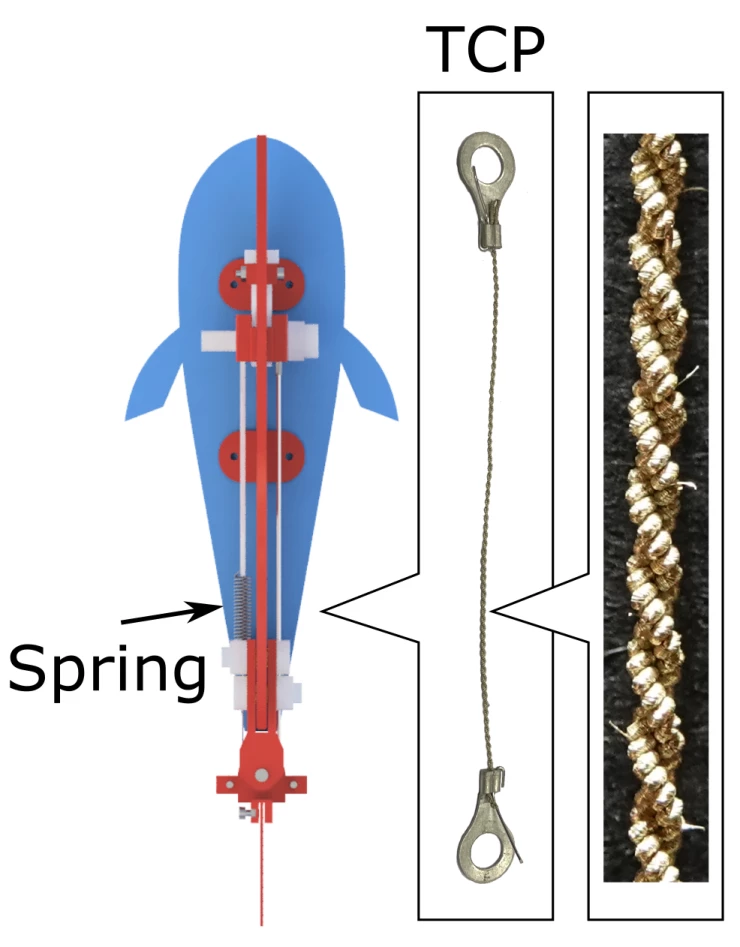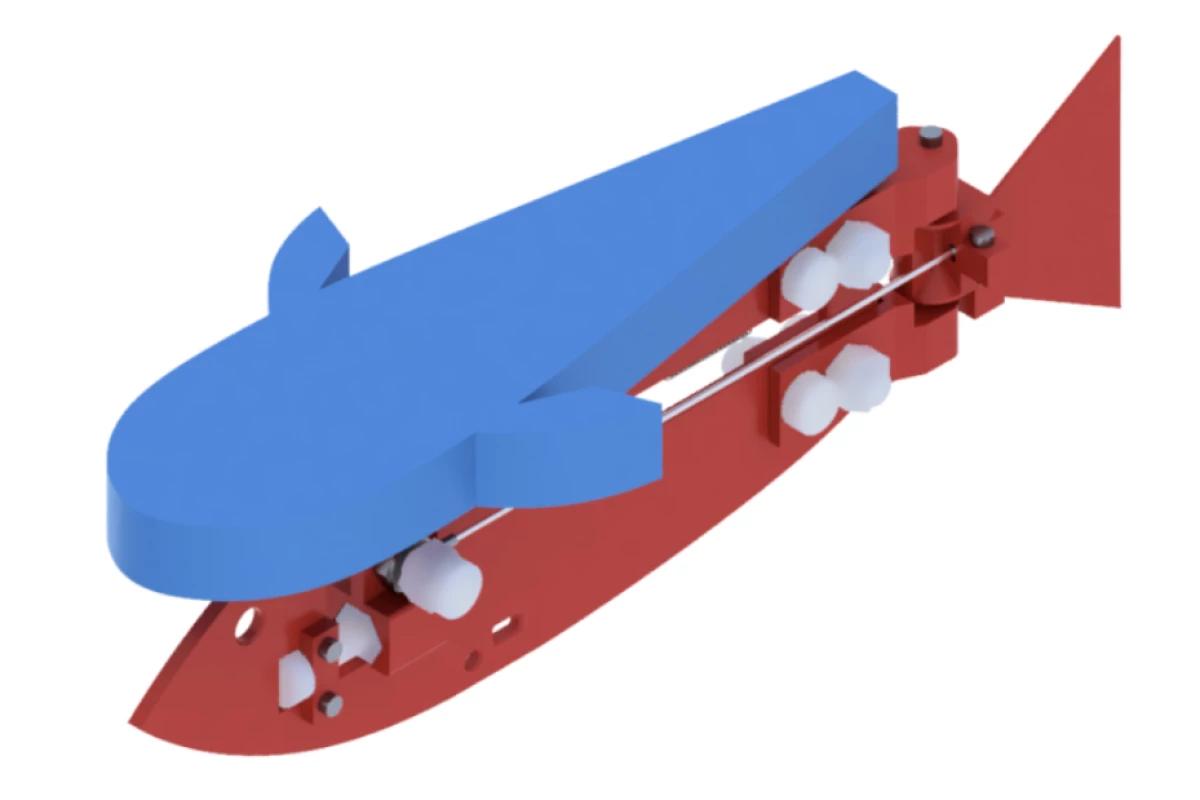When designing fish-like underwater robots, you want a means of propulsion which is both energy-efficient and reasonably speedy. A new tail-flapping system may fit the bill, paving the way for wider usage of such bots.
The experimental setup has been incorporated into a robotic fish built by a team of scientists at the University of Bristol, led by PhD student Tsam Lung You. It utilizes a modified version of a mechanism known as a twisted and coiled polymer (TCP).
In a nutshell, TCPs take the form of a coiled line, not unlike a landline telephone's handset cord. When the line is heated it coils tighter, contracting like a muscle. When the heat is removed the line relaxes again, returning to its default length.
One limitation of such devices lies in the fact that they can't produce repetitive movements very quickly, as it takes at least a second or so before they can contract again. The robotic fish addresses that problem.

It incorporates both a conductive-yarn TCP and a conventional steel coil spring, which lie side-by-side along the length of the robot. They're connected to opposite sides of a tail-flapping mechanism at the rear end of the bot, and are connected to one another via a linkage at the front.
When an electrical current is applied to the TCP it heats up and contracts, simultaneously pulling the tail to one side and stretching the coil spring. When the current ceases and the TCP relaxes, the stretched spring contracts, pulling the tail to the other side. By the time the tail has finished going to that side, the TCP is ready to contract and pull it back again.

In water tank tests, the robot was able to swim at a tail-flapping rate of two waves per second. The scientists are now incorporating the technology into a more agile robotic knifefish, which has an auger-like fin that runs along the length of its underside.
"Our robotic fish swam at the fastest actuation frequency found in a real TCP application and also the highest locomotion speed of a TCP application so far," said You. "This is really exciting as it opens up more opportunities of TCP application in different areas."
A paper on the research was presented earlier this month at the 6th IEEE-RAS International Conference on Soft Robotics, in Singapore. The robot can be seen in action, in the video below.
Source: University of Bristol





